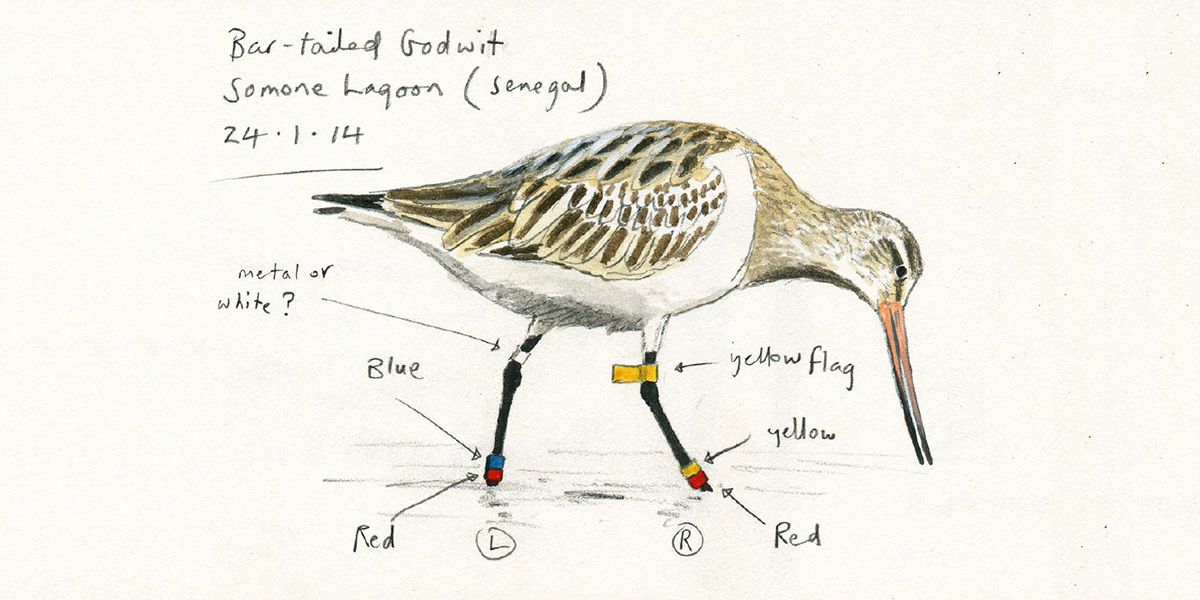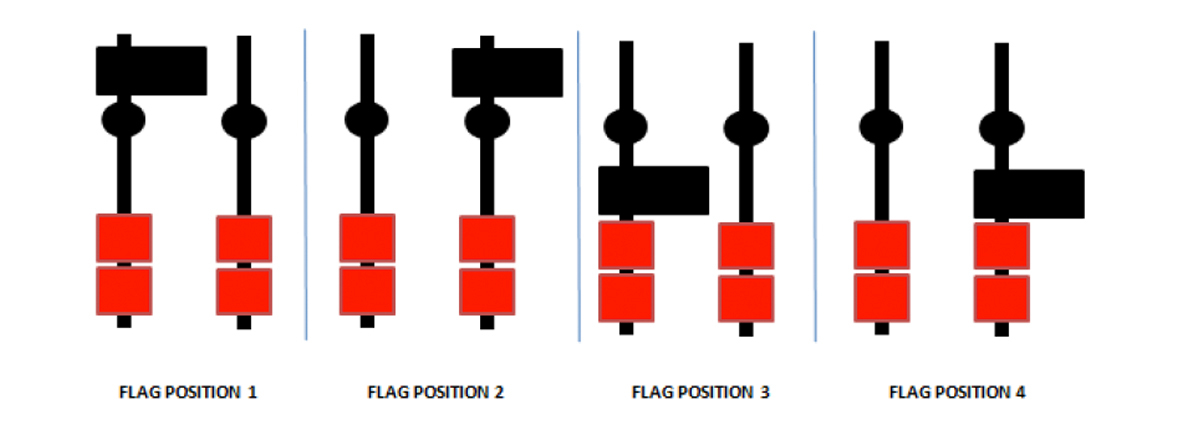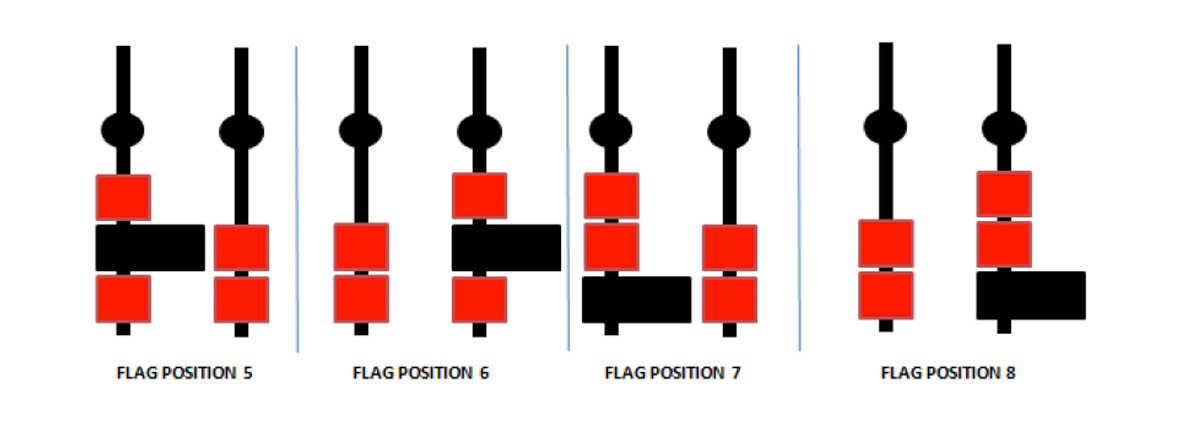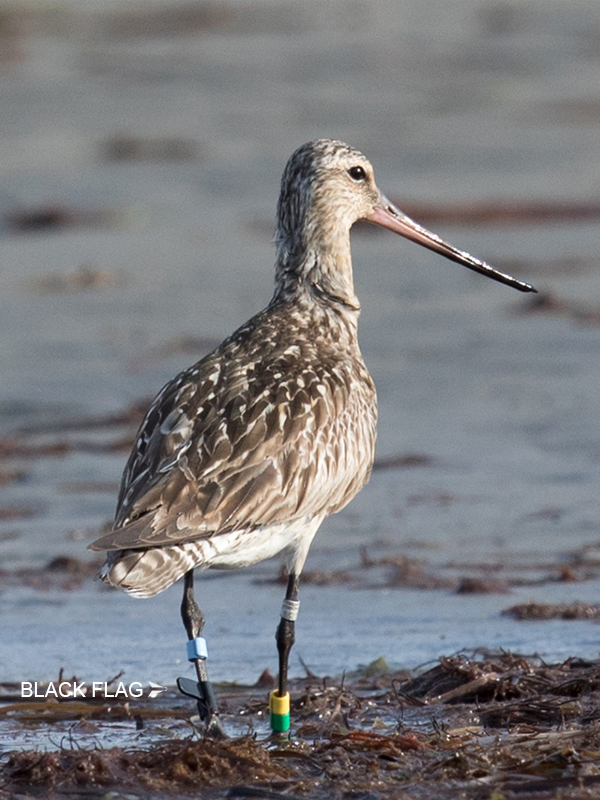Resighting Bar-tailed Godwits
Resighting of bar-tailed godwits can be sent to shorebirds@nioz.nl describing the colour-ring combination, the observation date and location. Additional information that we would like to receive are: the type of terrain, the flock size and if possible, the ring density (the number of colour-ringed individuals and the total number of observed birds) and the plumage (summer or winter plumage; if possible expressed as a percentage).

Colour-ring combination
The color ring combination consists of four color-rings and a flag (a ring with a kind of streamer). The flag colors that have been used since 2001 are shown in Figure 2 and are in chronological order, Yellow (Y), Red (R), Lime (L), Black (N) and again Yellow (Y). There are two color rings on each lower leg (the tarsus) with a flag in one of eight possible positions (see Figure 1). Each bird also carries a metal ring, this is not part of the color combination.
Since 2024, yellow flags are used in combination with 4 color rings, the colors used are black (shorthand N in accordance with international agreements for color ringing), Red (R), Yellow (Y), green (G) and Pale blue (P). A bar-tailed godwit with a red over a yellow ring on the left leg and with a yellow flag in between two green rings on the lower right leg is quoted as Y6RYGG. First, the position of the flag is noted and then the color-rings from top to bottom, first for the left leg (of the bird) and then for the right leg.
Flag positions


Flag positions
Since the launch of black flags, we have used a unique flag position for each catching area. This means that you can recognize where a bird was ringed from the position of the flag. N1 is used on Texel, N2 in Mauritania, N3 and N8 on Terschelling, N4 in Castricum, N5 on Ameland and N6 are birds that are caught with mist nets on Griend or Schiermonnikoog. N7 is not yet used. At the moment (May 2025) some combinations with Y2 are used in Mauritania (17 combinations starting with Y2GG) and Y6 in total 215 combinations are used at the island of Griend in the Dutch Waddensea.
Colour-rings

Ring loss - important to report!
In the early years of the study colour-rings were made of a plastic named Darvic. However, currently we are using a different material that has the properties of Plexiglas. These rings do not have eternal life and are often shorter than the maximum life of a bar-tailed godwit. This means there are incomplete combinations existing as a result of ring loss and some rings may be strongly faded as a result of ultraviolet light.
We would also like to receive resightings of birds with incomplete colour-ring combinations, so we can get an idea of the amount of ring loss. For birds with incomplete ring combinations, it is important for us to know the sex. It is easy to see the sexes between the birds in size (males are smaller than females) and plumage, especially in spring when the males get a reddish colour.
Information
We would also like to receive resightings of birds with incomplete colour-ring combinations

Since 2014, black flags are used in combination with four colour-rings

